If dogs could speak our language, they might say, “Oi, mate! my teeth could use some lovin’ too!”🐶 While we can’t teach them to floss, we can certainly help them with plaque removal. So, “How to remove plaque from dog teeth?“🦷
That’s the question we’re here to answer. We’ll walk you through the steps to keep your furry friend’s teeth shining. So, grab your furry sidekick, and let’s dive into the world of dental doggy delights!
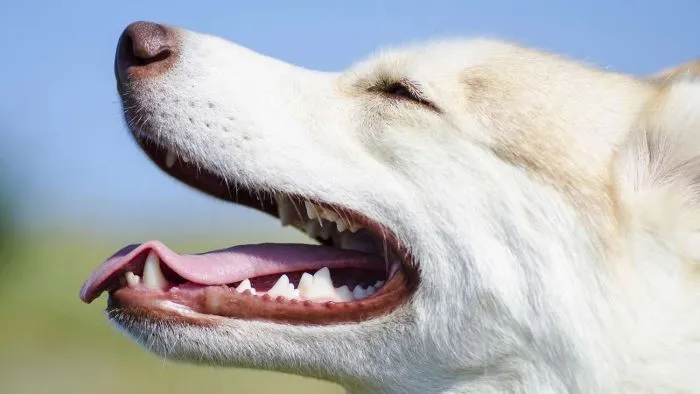
How to Remove Plaque From Dog Teeth?
In your dog’s mouth, there’s a colourless, sticky film called plaque.🦷 It’s like the clingy friend who never leaves the party. Plaque is made up of bacteria, saliva, and bits of food.
Now, here’s where things get intriguingly dramatic. If left untreated, plaque🦷 can lead to more severe dental problems such as inflammation of the gums, tooth decay, and several other damage due to bacterial infection🦠 in the bloodstream.
“Within 24 hours⌛, plaque begins to harden by combining with salts that are present in the saliva. As the plaque continues to accumulate and mineralize, it eventually transforms into tartar. If not properly managed, plaque can lead to a variety of dental problems🦷”, confirms Dr Malcolm Weir at VCA Hospitals.
Therefore, it’s crucial to manage plaque effectively. Let’s see the step-by-step guide to do this:
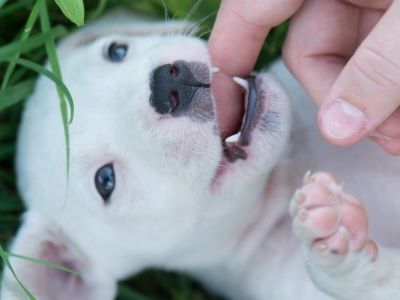
1. Tools and Supplies
To start, you’ll need some of these tools and supplies:
| Dental Care Tools | Importance |
|---|---|
| Toothbrush🪥 | A dog toothbrush with soft bristles, designed for comfort. Available in various sizes to suit both small and large breeds. |
| Finger Toothbrush | An alternative for dogs new to dental care is slips over your finger for precise control while brushing. |
| Dental Scaler | A handy tool for tackling stubborn tartar. Use with care to avoid harming your dog’s teeth.🦷 |
| Dental Toys🧸 | Rubber chew toys with textured surfaces aid in plaque removal, massage gums, and dislodge food remains. |
2. Preparing Your Dog for Dental Care
Before diving into plaque removal, it’s crucial to set the stage for a successful dental care routine. Begin by introducing your dog to the dental tools and environment gradually. Let them sniff and inspect the toothbrush🪥 and toothpaste.
Find a quiet, comfortable spot for dental care. A well-lit area where both you and your dog can relax is ideal. Use positive reinforcement, reward your dog with praise👏 and small treats(or anything your dog finds rewarding) during and after each dental session.🍭

3. Brushing Your Dog’s Teeth
Proper brushing is at the heart of effective plaque removal. Here’s what you do it[1]:
- Lift your dog’s lips gently to expose their teeth. Use a dog-specific toothbrush or a finger toothbrush.
- Brush in gentle, circular motions, focusing on the gum line. Pay extra attention to the outer surfaces of the teeth, where plaque tends to accumulate.
- Gradually increase brushing time as your dog becomes more accustomed to the routine.⏲️
Aim to brush your dog's teeth🦷 at least three times a week, if not daily. Consistency is the key🗝️ to maintaining oral hygiene. For a high-tech cleaning, try using the best ultrasonic dog toothbrush. The ultrasonic vibrations help remove plaque while still being gentle on your dog's teeth
4. Using Dental Chews or Toys
Dental chews and toys can complement your brushing routine and help reduce plaque. Select high-quality dental chews approved by vets. The chewing action helps mechanically remove plaque and produce saliva, which aids in cleaning the teeth.
Choose toys specifically designed for dental health, with textured surfaces to massage gums and dislodge remains. Interactive toys that release treats during play engage your dog’s mind while promoting chewing.
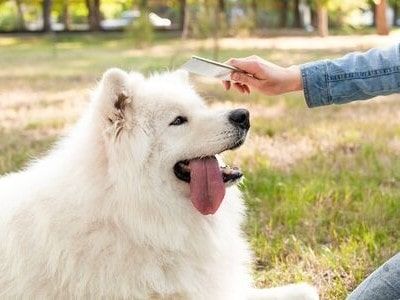
5. Dental Wipes and Gels
For persistent plaque or if your dog isn’t comfortable with brushing dental wipes and gels can be an alternative.
- Gently wrap a dental wipe🧻 around your finger. Carefully wipe your dog’s teeth and gums. Dispose🗑️ of the used wipe.
- Apply a small amount of dental gel to your dog’s teeth and gums as per the product’s instructions.
Many gels are formulated to inhibit bacterial growth🦠 and reduce plaque, and maintain the oral health of a dog.
Signs of Dental Problems in Dogs
It’s vital for every dog owner to be a keen observer of their pet’s oral health. Signs of dental problems in dogs may include[2], Unpleasant odours often indicate dental issues. Excessive drooling can result from pain or discomfort in the mouth.
Reluctance to eat, dropping food🍗, or chewing on one side can signify oral pain. Inflamed, bleeding, or swollen gums are concerning signs. Discoloured or missing teeth may indicate underlying problems. Scratching or pawing🐾 at the mouth can be a sign of discomfort.
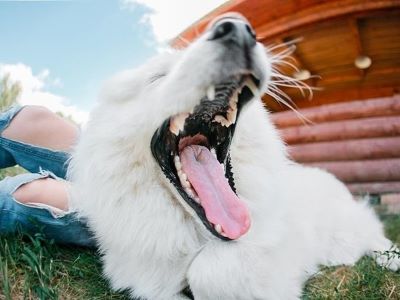
Consistency is the key to maintaining oral hygiene. But how often should you brush a dog teeth for optimal dental health?
Preventing Plaque Buildup
A well-balanced diet isn’t just about a shiny coat and boundless energy; it plays a key role in your dog’s dental health too.
- High-quality dog food promotes healthy gums and teeth. Dry kibble🥣 can help reduce plaque buildup as its abrasive texture naturally cleans teeth while your furry friend munches away.
- Dental treats are designed to be chewed, aiding in plaque removal and freshening breath. Dental supplements, when recommended by your vet, can provide additional support.
- Don’t underestimate the power of professional dental cleanings, they are essential for tackling plaque and tartar. They involve scaling, polishing, and sometimes removal if necessary.
- Be vigilant for signs like severe bad breath, loose teeth🦷, bleeding gums, and reluctance to eat. If your dog shows any of these symptoms, it’s time to schedule a vet visit.
Lastly, open communication with your veterinarian is crucial. They can offer tailored advice, recommend specific products, and create a dental care plan that suits your dog’s unique needs.
Home Remedies for Removing Plaque in Dog
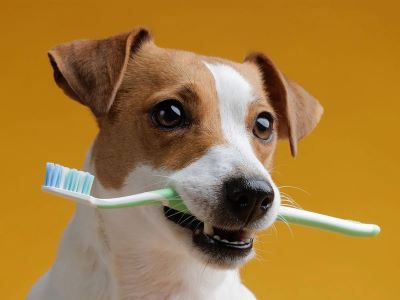
It is very important to remove the plaque from the dog’s teeth and it can be done at home too. Here are some home remedies you can follow to remove the plaque in your dog:
- Brush your dog’s teeth on a regular basis. Brushing your dog’s teeth regularly will remove the plaque not leading to its buildup. You can use the dog-friendly toothbrush and toothpaste available. To start with you can brush your dog’s teeth at least once a week.
- You can even use the dog teeth wipes, this wipes are of cotton and can clean your dog’s teeth easily. Wipes are designed to clean the dog’s teeth without irritating their gums.
- Dental chews are special chews which are prone to clean dog’s teeth by removing the food particles stuck. This dental, chews are easily consumable and will not harm the dog even if he gulps it.
- Dental sprays too are an easy way to clean the dog’s they contain chlorhexidine that helps to kill the bacteria. These sprays help to prevent plaque formation itself.
- You can use baking soda and apple cider vinegar to clean the dog’s teeth. Make the paste of baking soda and apple cider vinegar and brush it on your dog’s teeth. While using this make sure you consult a vet and avoid using it if it irritates your dog’s gums or stomach.
- Apart from all this, you can even feed your dog raw crunchy veggies and fruits like carrots, celery, or apples. These crunchy healthy treats help dogs to remove plaque and provide their gums with a good massage.
FAQs
❓Does Dog Toothpaste Remove Plaque?
Most types of dog toothpaste contain ingredients that help clean away stains and plaque. A specific kind of dog toothpaste called enzymatic dog toothpaste contains enzymes that help reduce bacteria, which can lessen tartar buildup and improve bad breath.
❓How to Remove Plaque From Dog Teeth?
Agility toys help your pup achieve good dental health as your dog spends a good amount of time pulling and chewing on them. The chewing results in getting their teeth scrubbed and therefore prevents the development of plaque and tartar. It also promotes healthy breath as your dog airs out his mouth
❓How Do I Soften My Dog’s Tartar Naturally?
Just like hard treats, crisp fruits and vegetables like carrots, beetroots, and celery help dogs chew away the plaque and tartar buildup. Many fruits and vegetables are high in vitamin C which provides protection to gums and other tissues from the risk of bacterial infections.
Conclusion
We’ve uncovered the mystery of plaque, its causes, and the dramatic consequences of neglecting it. We’ve armed you with a toolkit.🧰
But hey, if you’re ever wondering, “How to remove plaque from dog teeth?” we’ve got you covered, and no, it doesn’t involve doggy dental floss!🦷
By following our tips on how to brush dog teeth and implementing a dental care routine, you can keep your dog’s smile sparkling
So, embrace the dental routine, and let your dog’s grin shine as bright as the sun. Happy brushing!🪥
Reference:
- Staff, A. (2023c). Toothbrushing steps to make dog teeth dazzle. American Kennel Club.
- Reiter, A. M. (2023, September 19). Dental disorders of dogs. MSD Veterinary Manual.



